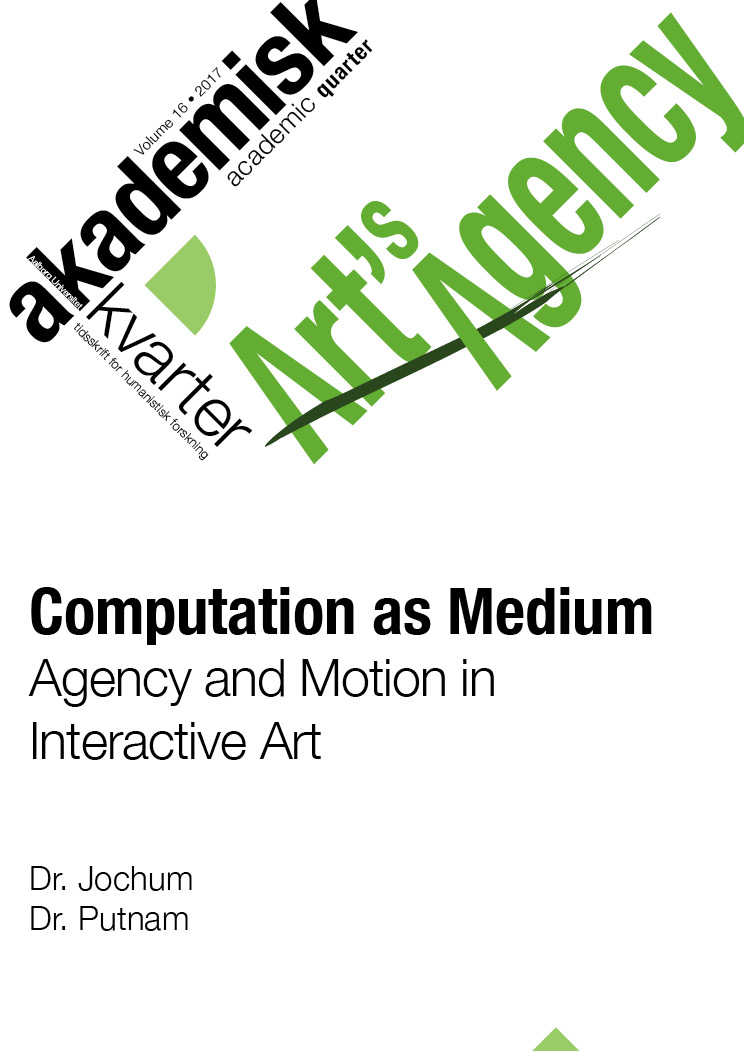Abstract | Abstract
Artists increasingly utilize computational tools to generate art works. Computational approaches to art making open up new ways of thinking about agency in interactive art because they invite participation and allow for unpredictable outcomes. Computational art is closely linked to the participatory turn in visual art, wherein spectators physically participate in visual art works. Unlike purely physical methods of interaction, computer assisted interactivity affords artists and spectators more nuanced control of artistic outcomes. Interactive art brings together human bodies, computer code, and nonliving objects to create emergent art works. Computation is more than just a tool for artists, it is a medium for investigating new aesthetic possibilities for choreography and composition. We illustrate this potential through two artistic projects: an improvisational dance performance between a human dancer and a mobile robot, and a virtual reality art work based on procedurally-generated content. Through our practice, we find that computation fosters an interrogative approach to artmaking that raises questions about agency and intentionality, such as how artists work with immaterial processes to generate novel and unexpected aesthetic experiences.
